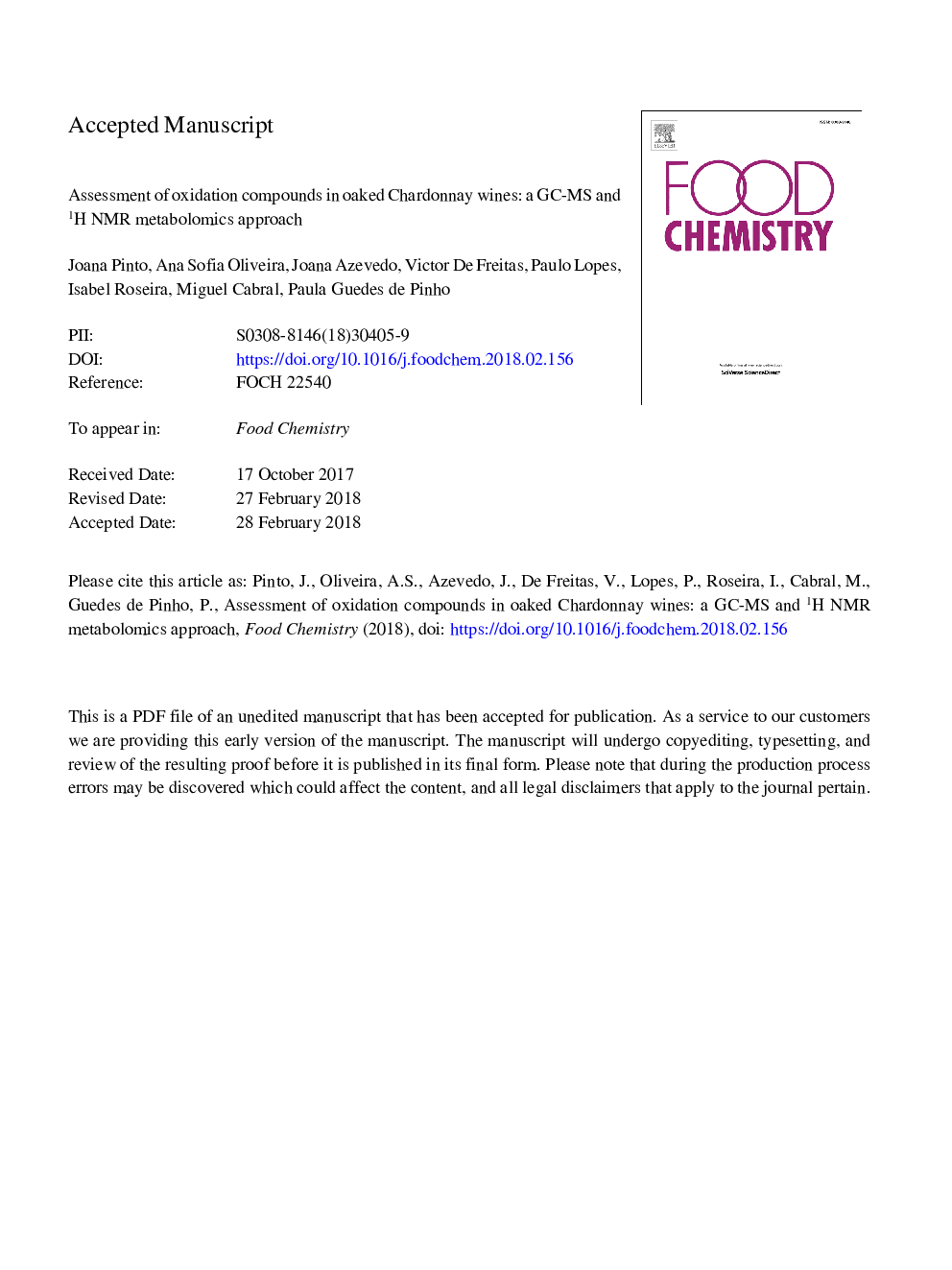| Article ID | Journal | Published Year | Pages | File Type |
|---|---|---|---|---|
| 7585190 | Food Chemistry | 2018 | 33 Pages |
Abstract
The oxidation of oaked Chardonnay wine during long-term storage was studied by headspace solid-phase microextraction coupled to gas chromatography-mass spectrometry (HS-SPME-GC/MS) and proton (1H) nuclear magnetic resonance (NMR) spectroscopy. Three distinct groups of wine were defined based on the browning index: control, least oxidized (OX1) and most oxidized (OX2). HS-SPME-GC/MS and 1H NMR spectroscopy enabled the profiling of a total of 155 compounds in all wine samples including aldehydes, ketones, esters, polyphenols, among other classes. Acetaldehyde, 3-methylbutanal, 2-phenylacetaldehyde, methional, 3-penten-2-one, β-damascenone and four unknown carbonyl compounds showed the highest percentage of variation with oxidation. Novel oxidation markers found in this work include pentanal, 3-methyl-2-butanone, 3-penten-2-one, 2-methyltetrahydrofuran-3-one, β-damascenone, ethyl 2-methylbutanoate and vinyl decanoate. In addition, several correlations between polyphenols, aroma compounds and absorbance at 420â¯nm (A420) were observed, suggesting the occurrence of chemical reactions with a possible impact in wine browning.
Keywords
Related Topics
Physical Sciences and Engineering
Chemistry
Analytical Chemistry
Authors
Joana Pinto, Ana Sofia Oliveira, Joana Azevedo, Victor De Freitas, Paulo Lopes, Isabel Roseira, Miguel Cabral, Paula Guedes de Pinho,
